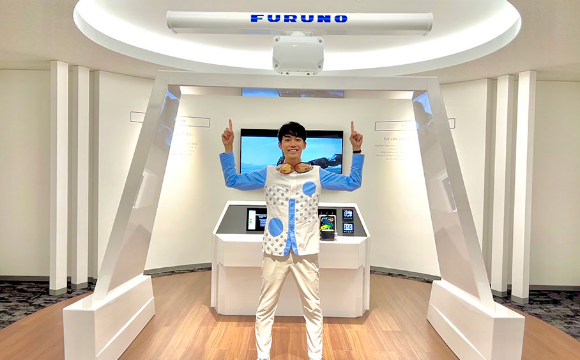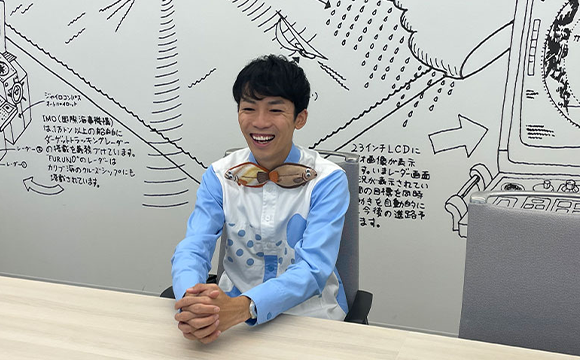vol.2
The collaboration illustration is finished! What secrets are hiding in the sea activity picture?
vol.2
The collaboration illustration is finished! What secrets are hiding in the sea activity picture?

-
Hello! I'm Captain Sakana, and I'm thrilled to announce that I've officially become a Furuno Ambassador!
You might know me from my work creating fish-themed picture books, singing original fish songs on TV Tokyo’s Synapusyu, showcasing aquariums on TV programs, and traveling across Japan to share the wonders of fish with children in fun and exciting ways.
Today, I have something special to share with you: the main visual for the Sea Pulse Project is complete!
But this isn’t just any illustration, it’s an interactive activity picture, filled with hidden objects for you to find and enjoy. It’s playful, educational, and full of surprises!
And now… here it is in all its glory!
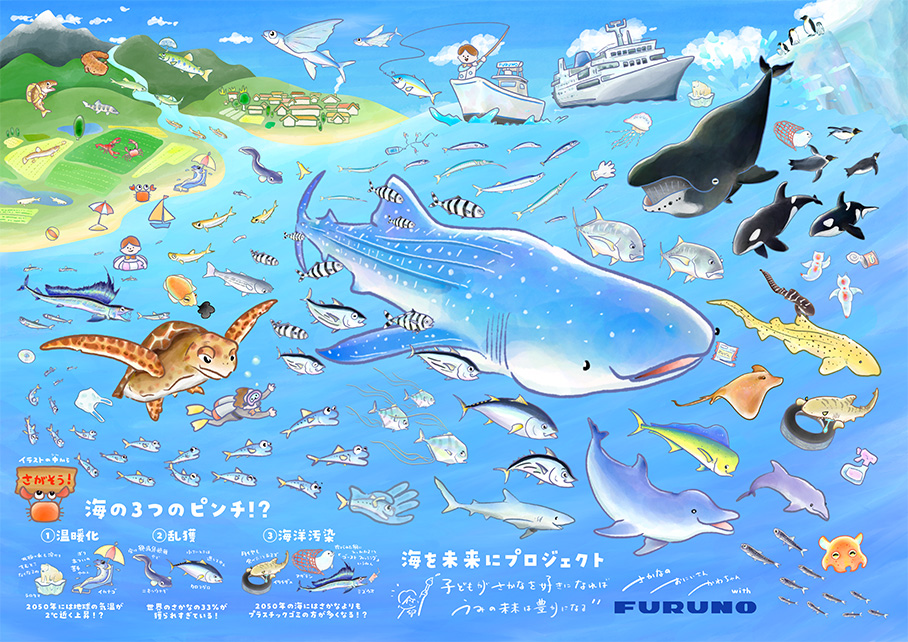
-
Ta-da! Do you like it?!
I wanted to create an illustration that would spark excitement in kids and capture the magic and wonder of the ocean.
And if you take a closer look… there’s even more to discover!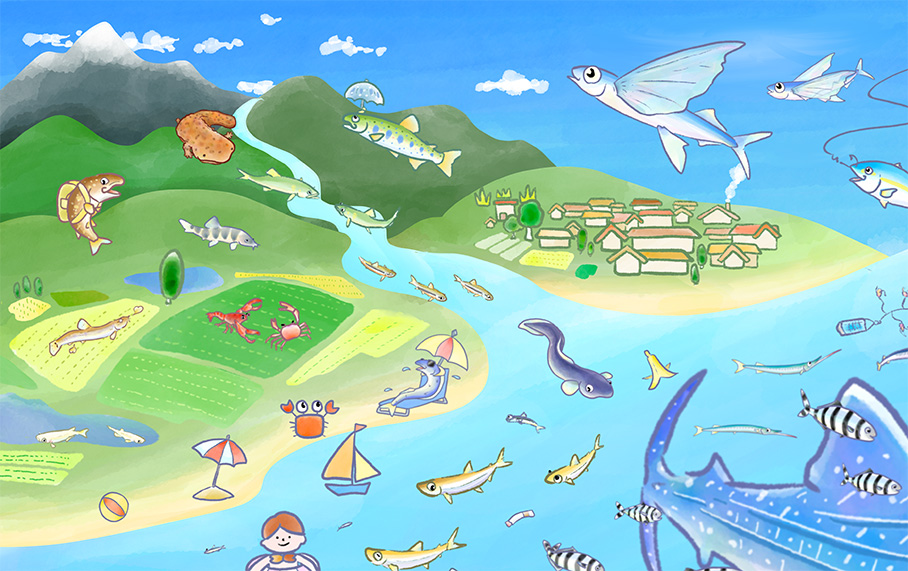
-
You can see an amago (red-spotted masu salmon) and a Japanese giant salamander in the mountain area.
Water with nutrients from the mountain flows through the area where people live and out into the sea through rivers.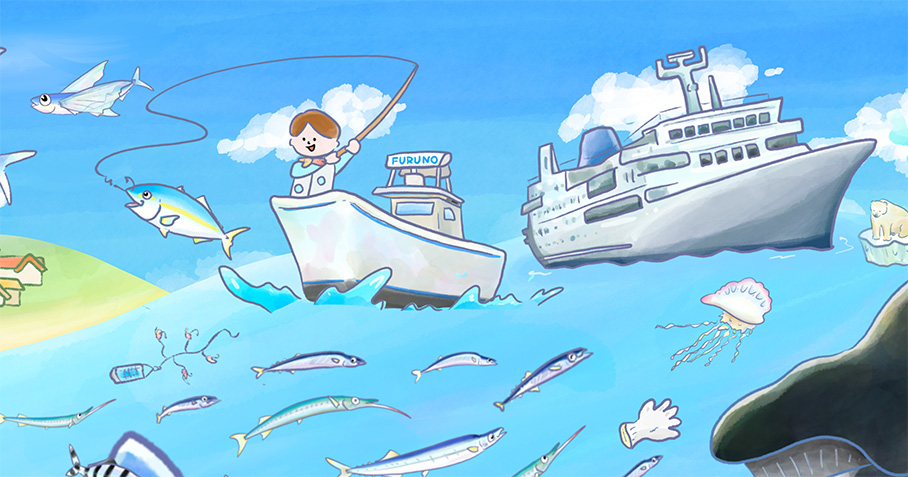
-
Oh! You can also see a Furuno Radar!
The sea provides us with an abundance of food,
and it also offers the joy and relaxation of fishing as a form of leisure.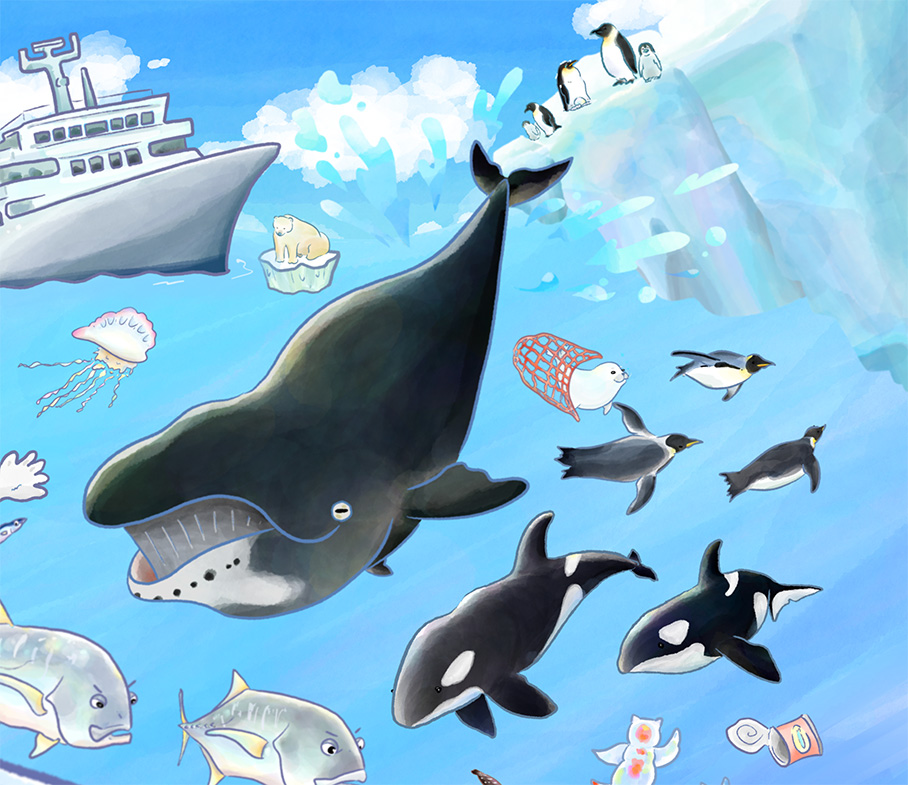
-
The sea is vast, and stretches endlessly into the horizon.
In the polar seas, pinguins swim, and large mammals like orcas and whales jump up out of the water.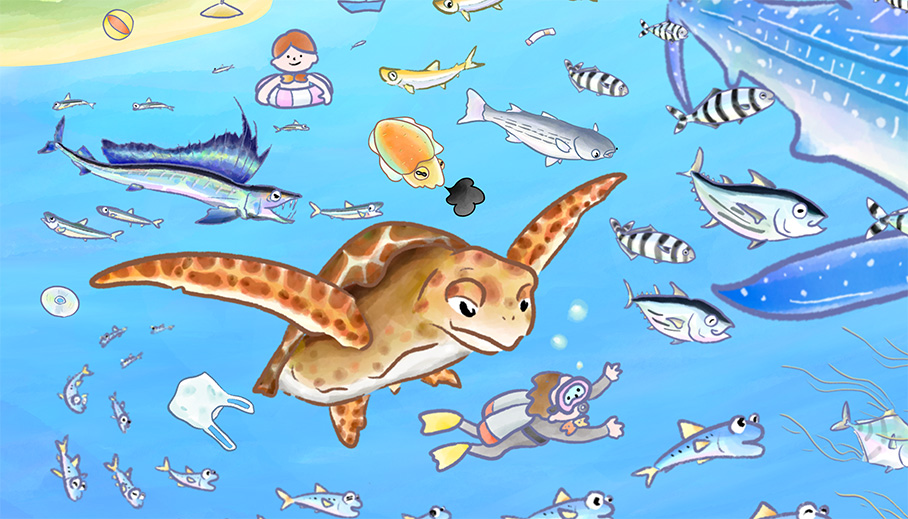
-
While you are looking at this and thinking about how wonderful this bountiful sea is ... did you notice something else?
The fish swim happily in the water, but are surrounded by ... Ocean wastes!
The truth is, not only does this illustration teach about the richness of the sea, it is also a searchable picture, filled with hidden elements that highlight the challenges our seas face.Let's go over those three problems affecting the Ocean today.
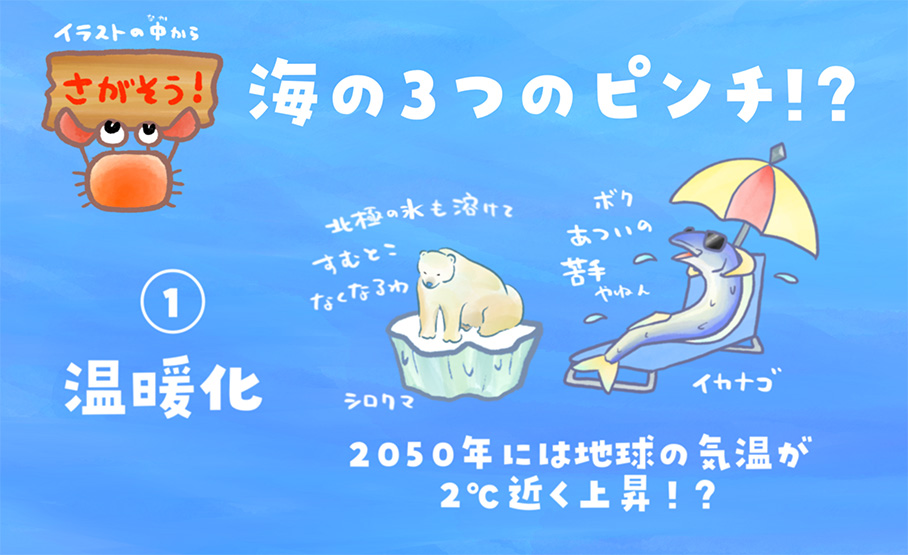
-
Global warming does not just impact the land, it has a profound impact on the ocean as well.
If we continue on our current path, Earth’s average temperature is projected to rise by 2°C by 2050. Alarmingly, over 90% of the excess heat trapped by greenhouse gases is absorbed by the ocean.The change in water temperature will change the habitats of fish, and there will also be an increase in dangers like the melting of North Pole ice resulting in a rise in the sea level and causing storm surges. Also, if the water temperature rises, the amount of oxygen that can be dissolved into the ocean will decrease, and this will also have an impact on the growth of fish. CO2 dissolving will cause the acidification of the ocean, and that will stunt the growth of shellfish like scallops.
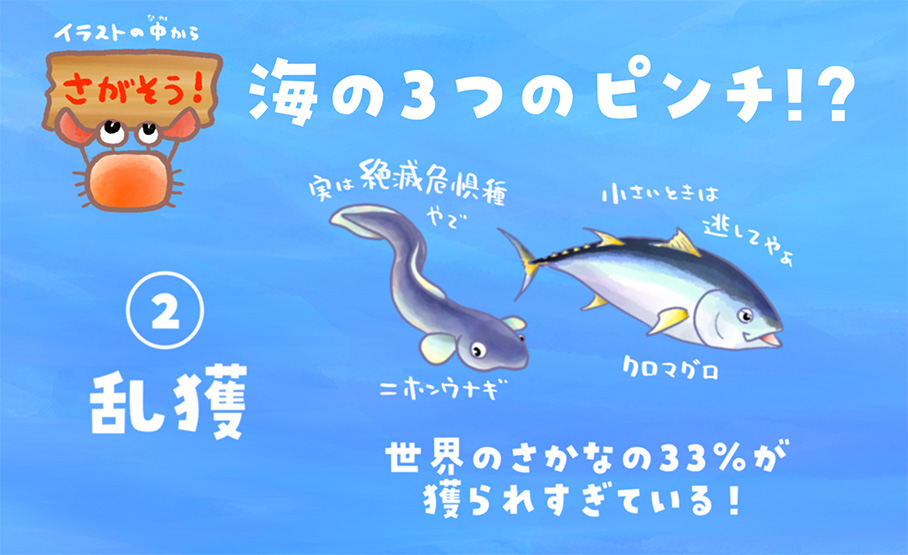
-
Fish are tasty! But let's be careful not to harvest too much.
Over the past 50 years, the global volume of fish harvesting has more than doubled.
Today, one-third of the world’s marine resources are already being overexploited, and less than 10% of fish stocks remain with a safe buffer before reaching their harvesting limits.
If you look at Japan alone, as of 2019, 50% of fish were being overexploited, which is higher than the worldwide average.The Japanese eel and Pacific bluefin tuna, which we consume readily, are drastically decreasing in number from overfishing.
And while aquaculture (fish farming) may seem like a solution, it’s not without problems. Farmed fish require feed, often made from wild-caught species like sardines and herring, which can lead to further overfishing.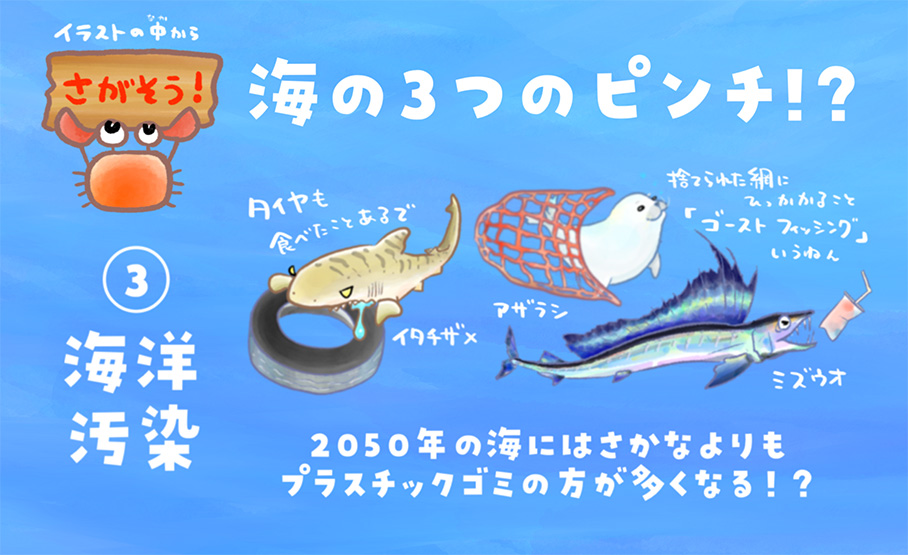
-
And then there is the marine pollution, especially from plastic waste.
It’s estimated that by 2050, the amount of plastic drifting in the ocean could outweigh the total mass of fish.
When they examined the inside of the stomach of a sperm whale that washed ashore the other day, 115 plastic cups, four plastic bottles, 25 plastic grocery bags, and two pairs of beach sandals came out.The sad reality is that 80% of marine debris comes from cities, carried by rivers and wind into the sea.
There’s also the growing issue of ghost fishing—when discarded fishing nets and lines continue to trap marine animals. These “invisible killers” can entangle seals, sea turtles, and other creatures, often leading to injury or death.
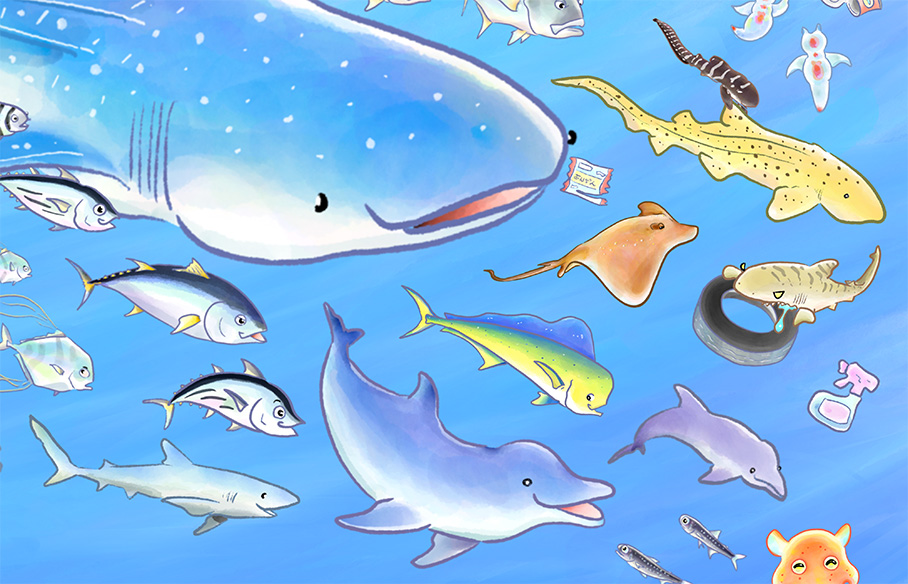
-
What I want to express through this illustration is: “With knowledge, we can change the future.”
I hope children will enjoy discovering the hidden images, learn about the challenges facing our oceans, and feel inspired to take action. This reflects the heart of my motto as Captain Sakana:
“If children grow to love fish, the future of the sea will flourish.”
It’s the future I want to build together with Furuno.When we think about difficult problems, instead of starting with “We have to do something,” I believe it’s more powerful to begin with the positive feeling of “loving something.”
Together with everyone at Furuno, I want to create a big, positive wave from Nishinomiya that will ripple out and change the oceans of the world. The sea has given us life—now it’s our turn to give back. That’s the spirit of the Sea Pulse Project.This illustration will be on display at Furuno + Captain Sakana events, so I’d love for you to come and have fun with us.
Let’s enjoy working toward a bountiful future together!Once again, I’m Captain Sakana.
Thank you so much for reading to the end!
Captain Sakana's daily activities

- Official websitehttps://sakana-bro.com
- Instagram@kawayanfishing/
- X(previously Twitter)@sakana_bro
- Official LINEhttps://lin.ee/qMPcnPq






